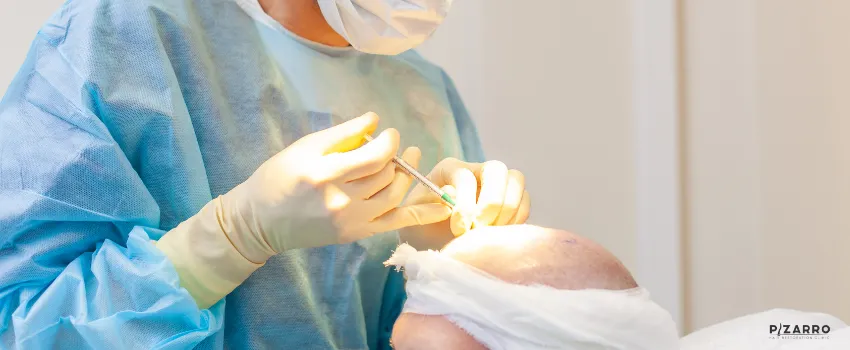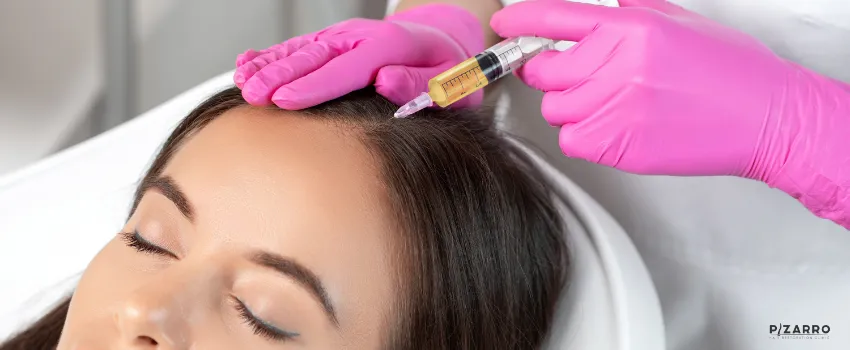A full head of hair is often associated with youth, vitality, and confidence. However, hair loss is a common issue that affects both men and women, causing many to seek solutions to restore their locks. Hair restoration surgery is one of the most effective ways to address this concern.
Hair restoration surgery has come a long way in recent years, with advancements in technology and techniques providing safer and more natural-looking results. But with the many options available, choosing the right one can be overwhelming.
In this blog, we’ll shed light on the different types of hair restoration procedures to help you learn about your options and find the best fit for you.
What is Hair Restoration Surgery?
Hair restoration surgery, also known as hair transplantation, is a surgical procedure that involves taking hair follicles from one part of the body, typically the back or sides of the scalp, and transplanting them to the bald or thinning areas.
The transplanted hair follicles are carefully implanted to mimic the natural growth pattern, resulting in new hair that looks and feels like the surrounding hair. This surgery aims to provide a long-lasting solution for hair loss, improving the patient’s appearance and, in turn, their self-confidence.
How Does Hair Restoration Surgery Work?
Over the years, various hair restoration surgery techniques have been developed, each with advantages and considerations. The choice of procedure depends on factors such as the extent of hair loss, the patient’s goals, and their suitability as a candidate for a particular technique.
While the exact methods and approaches employed can vary significantly, they all share the same goal of helping individuals regain their confidence by restoring a fuller, more youthful head of hair. The decision on which technique to choose should be made in consultation with a qualified hair restoration specialist who can assess the patient’s unique needs and recommend the most suitable types of hair restoration treatment.
Different Types of Hair Restoration Treatment

Understanding the different types of hair restoration surgery is pivotal in making informed decisions about addressing hair loss concerns. Here are the different types of hair restoration procedures, their unique advantages, and considerations:
1. Follicular Unit Transplantation (FUT)
Follicular Unit Transplantation (FUT), also known as strip harvesting, is one of the traditional hair restoration methods. In this procedure, a strip of scalp containing hair follicles is surgically removed from the donor area.
The surgical team then carefully dissects the strip to obtain individual grafts that are later transplanted into the recipient site. FUT can yield many grafts in a single session, making it suitable for patients with extensive hair loss.
However, it’s worth noting that FUT leaves a linear scar on the donor area that may limit the patient’s ability to wear very short hairstyles.
2. Follicular Unit Extraction (FUE)
Follicular Unit Extraction (FUE) is a modern technique that involves the extraction of individual hair follicles directly from the donor area using a specialized punch-like instrument. Unlike FUT, FUE does not require the removal of a strip of scalp, making it a scar-free option.
The extracted follicles are then transplanted into the recipient site, following the same process as in FUT. FUE is known for creating a more natural-looking hairline and is suitable for patients who prefer to wear their hair short or have a limited donor supply.
3. Robotic Hair Transplantation
Robotic hair transplantation is an advanced, technology-driven approach to FUE. This method uses a robotic system to perform the hair follicle extraction with the utmost precision.
The robotic system utilizes advanced imaging technology to identify and select the optimal hair follicles for extraction. It then carries out the extraction process, which is precise and minimally invasive. The extracted follicles are carefully transplanted into the recipient site, following the same steps as in FUE.
Robotic hair transplantation offers several benefits, including increased accuracy, reduced procedure time, and the ability to harvest more grafts. However, it’s worth noting that this method requires specialized equipment and, in some cases, may have a higher cost than other hair restoration surgery techniques.
4. Scalp Reduction
Scalp reduction is a hair restoration surgery technique involving the surgical removal of bald scalp areas. The remaining hair-bearing scalp is then stretched or advanced and sutured together, reducing the bald surface.
This procedure is typically recommended for patients with well-defined bald areas and good scalp flexibility. While scalp reduction can provide significant coverage for selected candidates, it’s important to note that it may not be suitable for individuals with extensive hair loss.
5. Scalp Expansion
Scalp expansion is a unique technique that gradually stretches the hair-bearing scalp over several weeks. This is achieved by inserting a balloon-like device under the scalp and gradually filling it with a saline solution.
As the balloon expands, it causes the overlying scalp to stretch and grow new skin. Once sufficient expansion is achieved, the balloon is removed, and the expanded scalp is used to cover the bald areas through a subsequent surgical procedure.
Scalp expansion is typically recommended for patients who desire maximum hair restoration in cases with a limited donor supply. However, it’s worth noting that this technique, among types of hair restoration procedures, requires multiple procedures and a longer overall treatment time.
What is the Latest Hair Restoration Method?

The field of hair restoration surgery continues to evolve, with ongoing research and technological advancements paving the way for new and innovative types of hair restoration procedures. One of the leading methods is platelet-rich plasma (PRP) therapy, which is a widespread technique gaining popularity:
PRP Therapy
Platelet-rich plasma (PRP) therapy stands out as an innovative technique among different types of hair restoration. It’s often used alongside traditional hair restoration procedures, offering a minimally invasive approach. PRP therapy involves drawing a small amount of the patient’s blood, extracting platelet-rich plasma containing growth factors, and then skillfully injecting it into areas with hair thinning or baldness. This method is safe and well-tolerated, with patients quickly resuming regular activities.
PRP therapy is particularly effective for early-stage hair loss and complements other hair restoration procedures like Follicular Unit Transplantation (FUT) or Follicular Unit Extraction (FUE). Patients can achieve enhanced results by combining PRP therapy with surgical methods, making it a versatile and comprehensive solution.
The most suitable treatment choice among types of hair restoration depends on individual factors, including hair loss severity and personal preferences. Consulting a qualified specialist is crucial to determine the best approach for regaining confidence in your hair.
The Bottom Line
Hair restoration surgery offers a path to combat hair loss and regain confidence. The different types of hair restoration have various advantages and considerations, making it essential to consult a professional hair restoration specialist. Their expertise can guide individuals in choosing the most suitable approach, ensuring a successful journey towards restoring their locks and self-assurance.
Rediscover Your Confidence with Pizarro Hair Restoration!
If you’re considering hair restoration surgery in Orlando, FL, Pizarro Hair Restoration can help. We specialize in safe and long-lasting hair restoration solutions. Contact us today to schedule a consultation and take the first step toward regaining your confidence.






